We treat
Post-traumatic headache
Learn more about post-traumatic headache and its treatment
What are post-traumatic headaches?
Post-traumatic headache refers to headaches that occur after a person experiences a traumatic event, especially one involving the head or neck. The diagnosis of post-traumatic headache is usually made through a combination of a thorough history, physical examination, and possibly diagnostic tests such as CT or MRI scans.
Jump to section [Vis]
What causes post-traumatic headaches?
The cause of post-traumatic headaches can be complex and involve a variety of factors. Here are some possible causes:
Direct head injury: An obvious cause of post-traumatic headaches is direct injury to the head as a result of an accident, fall, impact, or other traumatic event. This can lead to damage to tissues, blood vessels, or nerves in the head or neck.
Muscle tension: Traumatic stress can cause muscle tension in the neck and shoulders, which can lead to headaches. The tension may be due to the body’s natural response to stress and anxiety after a traumatic event.
Changes in blood vessels: Damage to blood vessels in the head or neck during a traumatic event can lead to changes in blood flow and result in headaches.
Brain changes: Traumatic events can cause physical changes in the brain, including changes in neurotransmitters involved in pain perception and regulation. As a result, the brain may be more sensitive to producing pain responses.
Post-traumatic stress disorder (PTSD): People who develop PTSD as a result of a traumatic event may experience physical symptoms such as headaches as part of their overall reaction to the physical trauma.
Combination of factors: Often, post-traumatic headaches are the result of a combination of physical and psychological factors, where both direct head injuries, stress, and psychological reactions play a role.
Source: Rigshospitalet

Symptoms of post-traumatic headache
The symptoms of post-traumatic headache can vary from person to person, but they typically include different types of headaches and may also include other related symptoms. Some of the most common symptoms include:
- Headache: This is the primary symptom. The headache can vary in intensity, character and duration. It can be throbbing, pressing or tension-like and can range from mild to severe.
- Sensitivity to light (photophobia): Many people with post-traumatic headaches experience an increased sensitivity to light and may have difficulty tolerating even moderate light.
- Sensitivity to sound (phonophobia): An increased sensitivity to sound is also common. Loud or sudden noises can worsen symptoms.
- Nausea and vomiting: Some people with post-traumatic headaches may experience nausea and, in severe cases, vomiting.
- Dizziness or balance problems: Some individuals may experience dizziness or balance problems as part of their symptoms.
- Problems with concentration and memory: Post-traumatic headaches can affect cognitive function, which can result in concentration problems and memory problems.
- Soreness in the neck and shoulders: Since traumatic events often involve injuries to the head, neck, or shoulders, soreness and pain in these areas can also be part of the symptom picture.
Relationship between PTSD and post-traumatic headache
Post-traumatic stress disorder (PTSD) and post-traumatic headache (PTH) are two different conditions, but they can often occur as a result of the same traumatic event.
There is significant overlap between the symptoms of PTSD and PTH, especially when it comes to headaches and other physical symptoms.
Both PTSD and post-traumatic headaches can be triggered by a traumatic event, such as an accident, war experience, assault, or natural disaster. People who develop PTSD as a result of a traumatic event may also experience post-traumatic headaches as a physical manifestation of stress and anxiety.
Treatment options for post-traumatic headache (PTH) may vary depending on the severity of the symptoms and the individual patient’s needs.

Medical solutions for post-traumatic headaches
The medical approach to post-traumatic headache can be divided into pain relief and preventive. Here is an overview of it:
Pain relief medication
Nonsteroidal anti-inflammatory drugs (NSAIDs): Examples include ibuprofen and naproxen, which can help reduce pain and inflammation.
Triptans: These medications are usually used for migraines, but some people with post-traumatic headaches may benefit from them, especially if there is a migraine component.
Preventive medicine:
Antidepressants: Tricyclic antidepressants such as amitriptyline or nortriptyline can sometimes be used as a preventative treatment for chronic headaches.
Beta blockers: Drugs such as propranolol can also be used to prevent headaches.
Source: Dansk Center for Hjernerystelse
Complete Guide to Natural Post-Traumatic Headache Relief (Non-Medical Approach)
Managing post-traumatic headache may include several approaches to relieve symptoms and improve quality of life.
Seek professional help: Consult a healthcare professional for a proper diagnosis and treatment plan. A specialist can evaluate your symptoms and help identify the most effective interventions.
Regular exercise: Incorporate regular moderate exercise into your routine, if possible and approved by your doctor. Exercise can help reduce stress and promote overall well-being.
Stress management: Learn stress reduction techniques, such as deep breathing, meditation, or mindfulness. Reducing stress levels can have a positive impact on headaches and other symptoms.
Healthy lifestyle: Eat a healthy and balanced diet. Avoid excessive intake of caffeine and alcohol as these can affect the headache.
Follow a regular sleep schedule: Make sure to maintain a healthy and regular sleep schedule. Insufficient sleep can worsen headaches and other symptoms. Try to establish a calming bedtime routine and avoid screen use before bed.
Social support networks: Share your experiences with family, friends, or support groups. A strong social network can help you cope with the emotional aspects of post-traumatic headaches.

Latest research into post-traumatic headache
The latest research recommends that the treatment of post-traumatic headache should be a predominantly multidisciplinary approach, which includes a combination of medication, healthcare professional treatment, psychological support, and lifestyle changes.
An individual approach is often necessary, and the treatment plan can be customized based on the individual patient’s needs and symptoms.
Source: National Library of Medicine
Osteopathic approach to post-traumatic headache
The osteopathic approach will be a thorough discussion about how the individual’s symptoms manifest themselves. Next, an examination of the body will be performed.
Based on all the different systems in the body, the neurological system will likely be based on whether the 12 cranial nerves and their functions have been affected. Also because the cranial nerves represent sensory parts of the meninges, which can affect the signals from the meninges to the brain itself.
The respiratory one looks at how the supply of new blood to the head is proceeding and whether the brain can drain the fluid away optimally again. Classic symptoms here can be, for example, a feeling of heaviness in the head or a throbbing/pulsating headache with increased heart rate.
The psychological part is based on the parasympathetic and sympathetic nervous systems, as these two systems function in balance and counteract each other to maintain internal stability in the body. Dysfunction in either the sympathetic or parasympathetic nervous system can lead to various health problems and disorders. If there is an imbalance between these two, more global problems can also be seen in relation to the gastrointestinal system and hormonal system.
The mechanical one looks at whether there may be tightness or reduced movement that may affect some of the other systems. This could be the neck joints, where there is reduced mobility, or the mobility of the skull itself, which can subsequently affect, for example, nerves that exit the skull or neck and control muscles, joints or other systems in the body.
In addition, it is important to have a good metabolic process to maintain energy supply, regulate neurotransmitters, maintain cell membrane potential, and perform a number of other functions necessary for normal brain function.
Together with the medical history, an individual treatment strategy will be developed based on a holistic approach, as the symptoms of post-traumatic headache can differ from person to person.

Exercises for post-traumatic headaches
Breathing exercise:
- Sit or lie down and focus on slow, deep breathing.
- Inhale deeply through your nose, hold your breath for a few seconds, and exhale slowly through your mouth.
- Repeat this deep breathing several times to promote relaxation.
The purpose of the breathing exercise is to increase the parasympathetic nervous system which can have several positive effects on the body such as: Reduced stress and anxiety, improved digestion, lowered heart rate and blood pressure, promoting recovery and sleep.
Shoulder lift exercise:
- Stand up with a straight back.
- Lift your shoulders up towards your ears.
- Hold the position for 10 seconds, then lower your shoulders.
The purpose of the exercise is to make yourself aware of tension in the shoulders and to relax them. If there is less tension around the shoulders, it can help increase blood flow to the head.

Often related problems
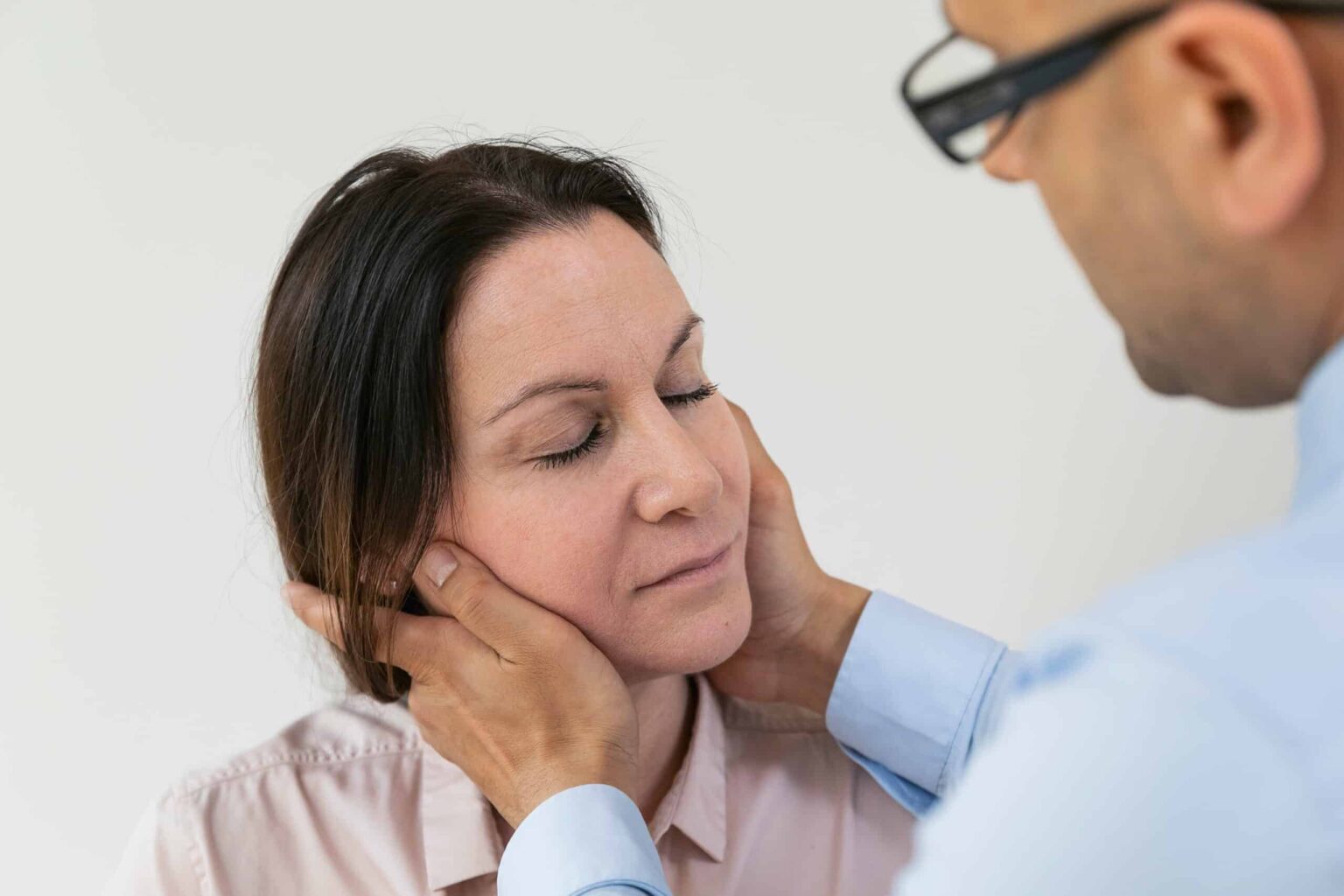
Jaw joint pain
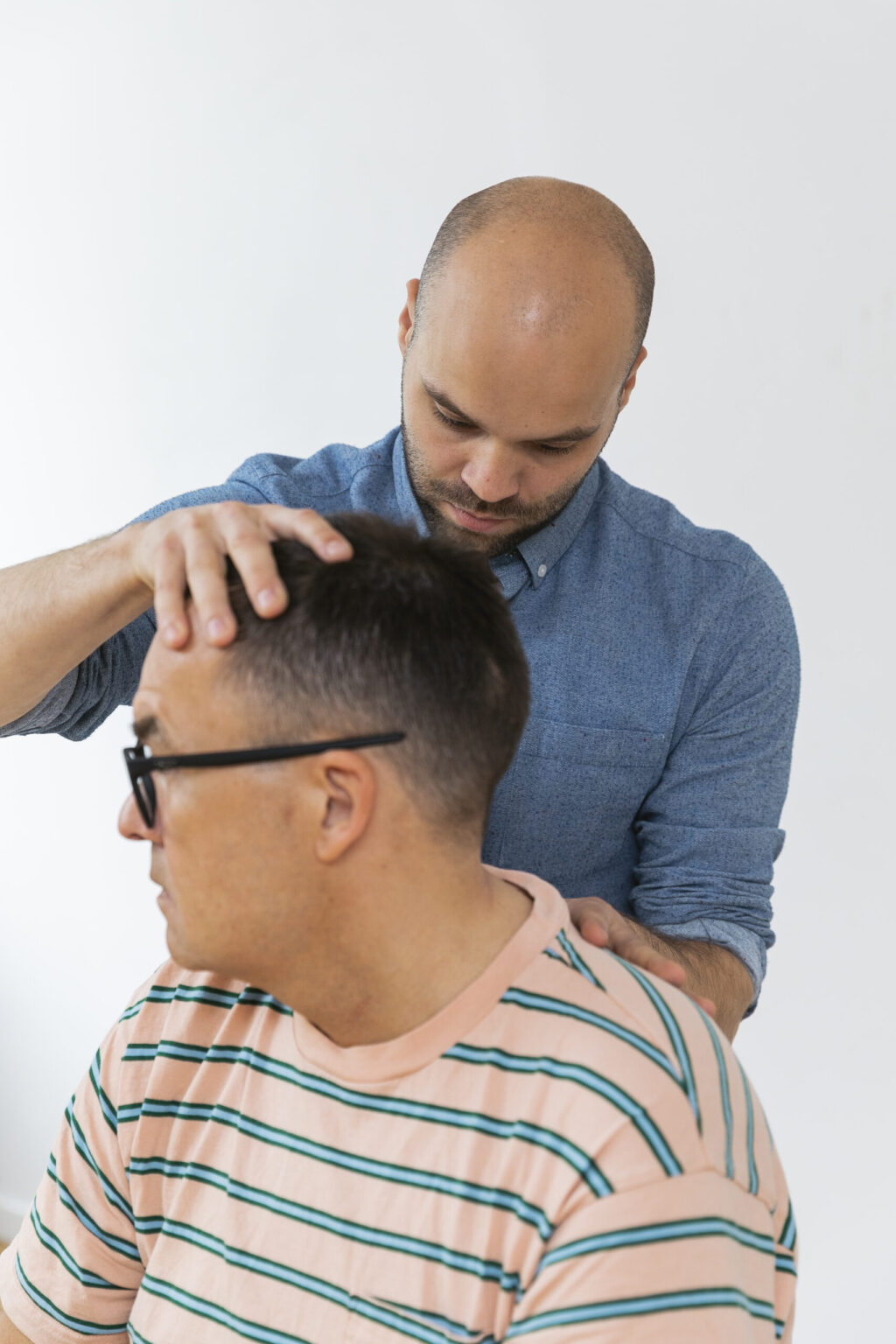
Brain hemorrhage
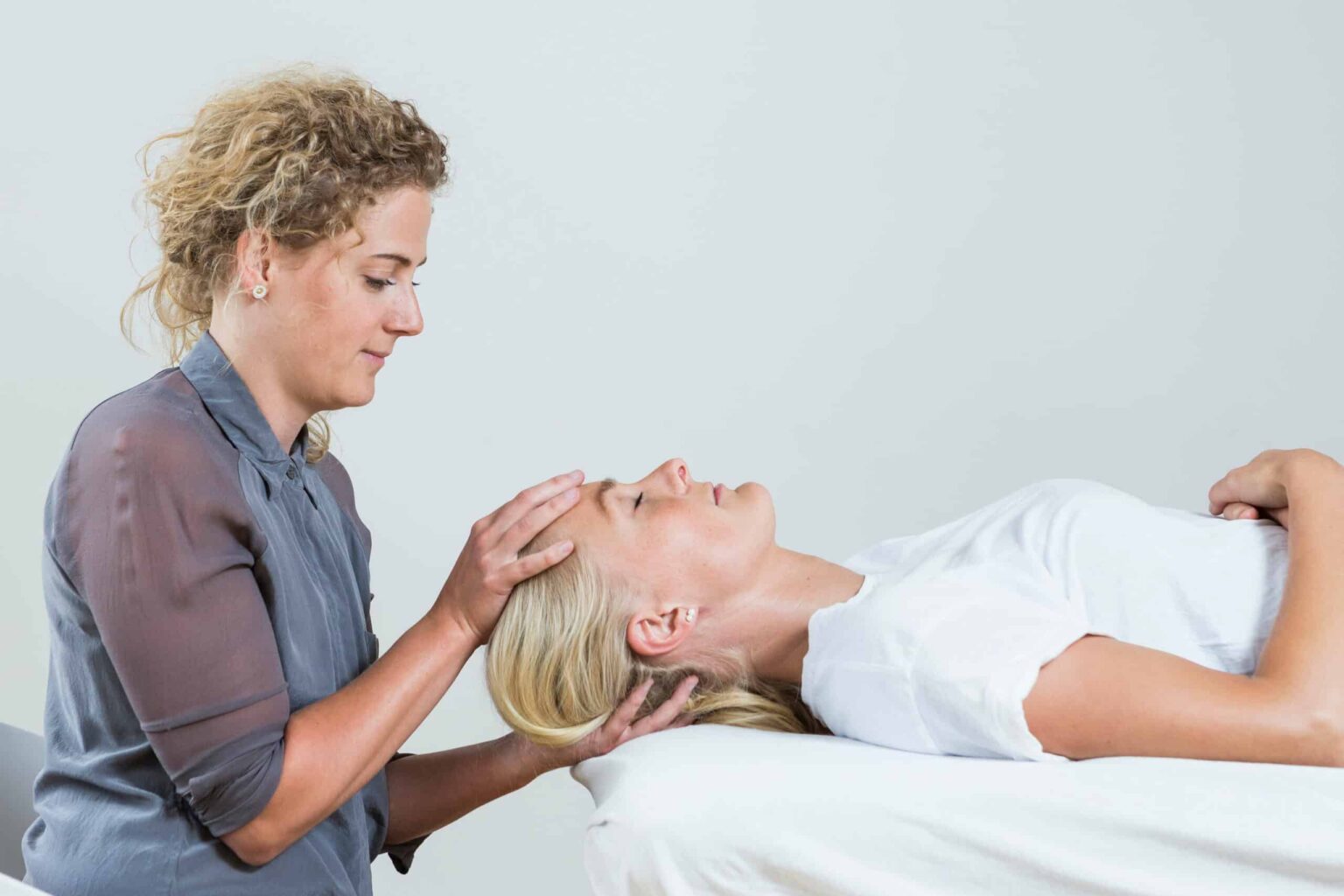
Post-traumatic headache
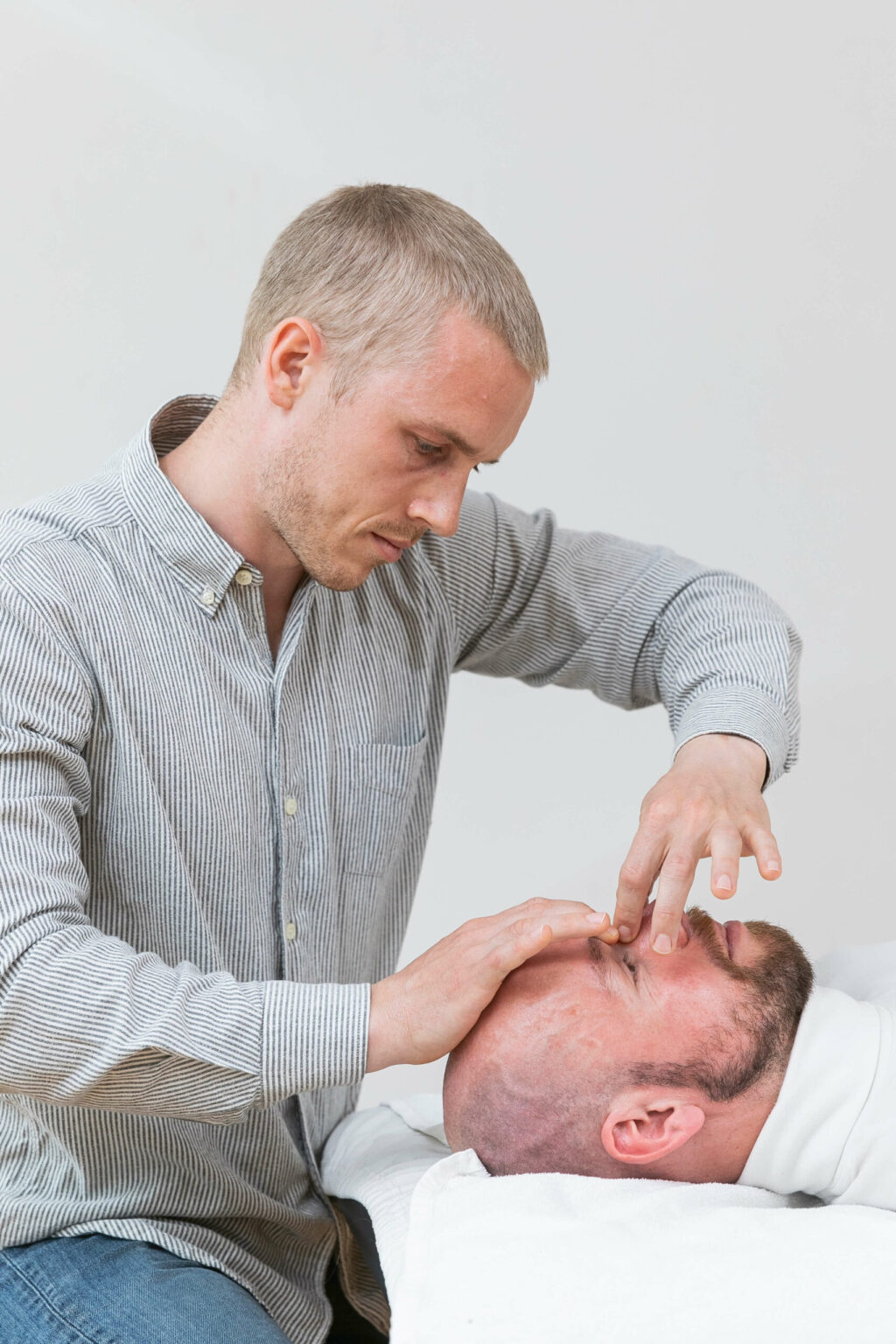
Sinusitis

Tinnitus
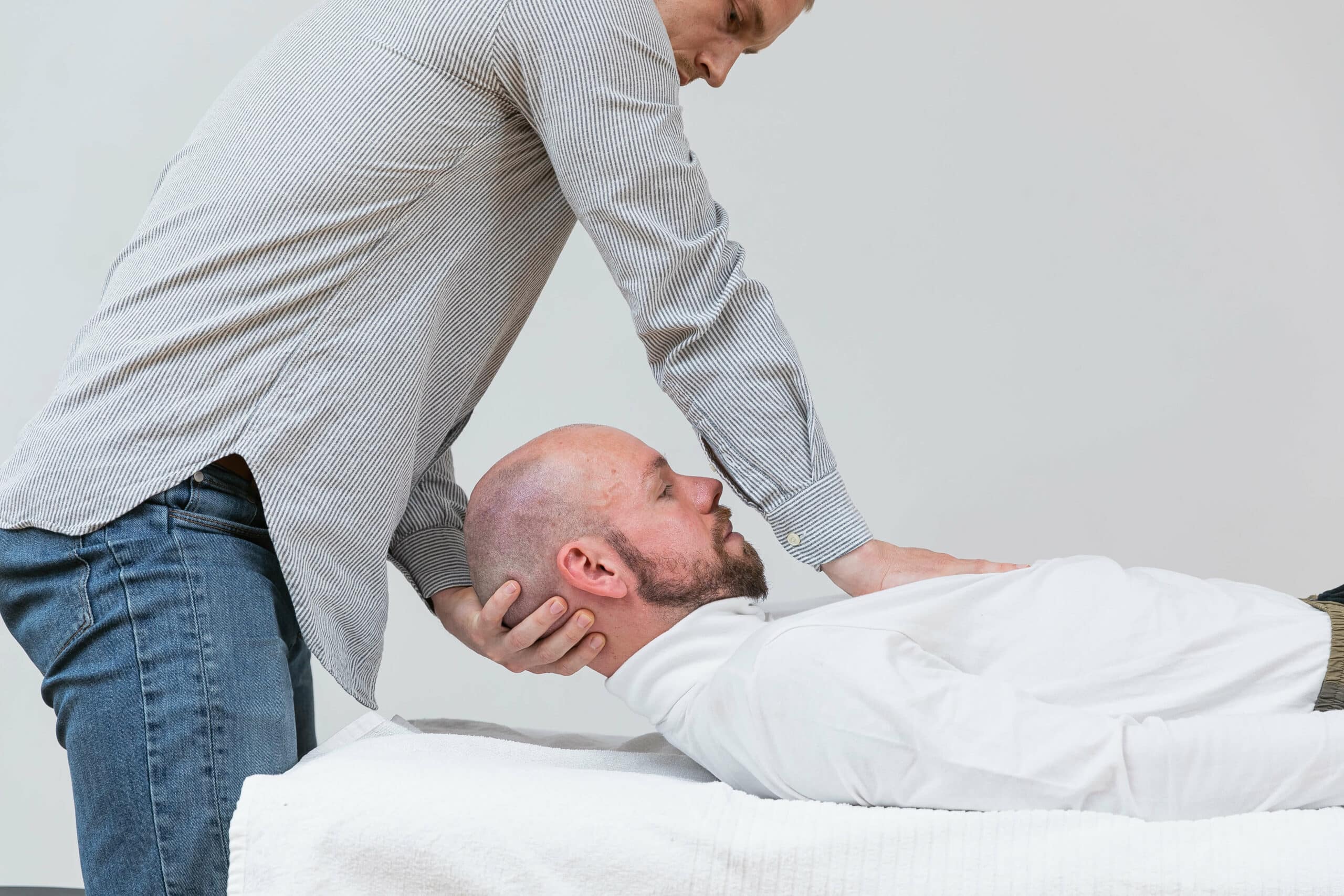
Vestibular dysfunction

Maxillary sinusitis

